Whether it’s athletics, soccer, or baseball, you want to capture beautiful photos of your loved ones or athletes in action. However, sports photos often involve people moving quickly, so you need to be careful with shutter speed and focusing. In this post, we’ll share tips and techniques for capturing dynamic sports photography that highlights motion, energy, and emotion in every shot.
What You’ll Learn In This Article:
- How to use shutter speed effectively to freeze or blur motion in dynamic sports photography
- Tips for using continuous autofocus and burst mode to track fast-moving athletes
- How to choose the best Tamron telephoto lenses based on sport type and shooting distance
- Techniques for creative shots like panning and low-angle compositions
- How to anticipate key moments in different sports like soccer, basketball, and motorsports
Mastering Shutter Speed for Dynamic Sports Photography
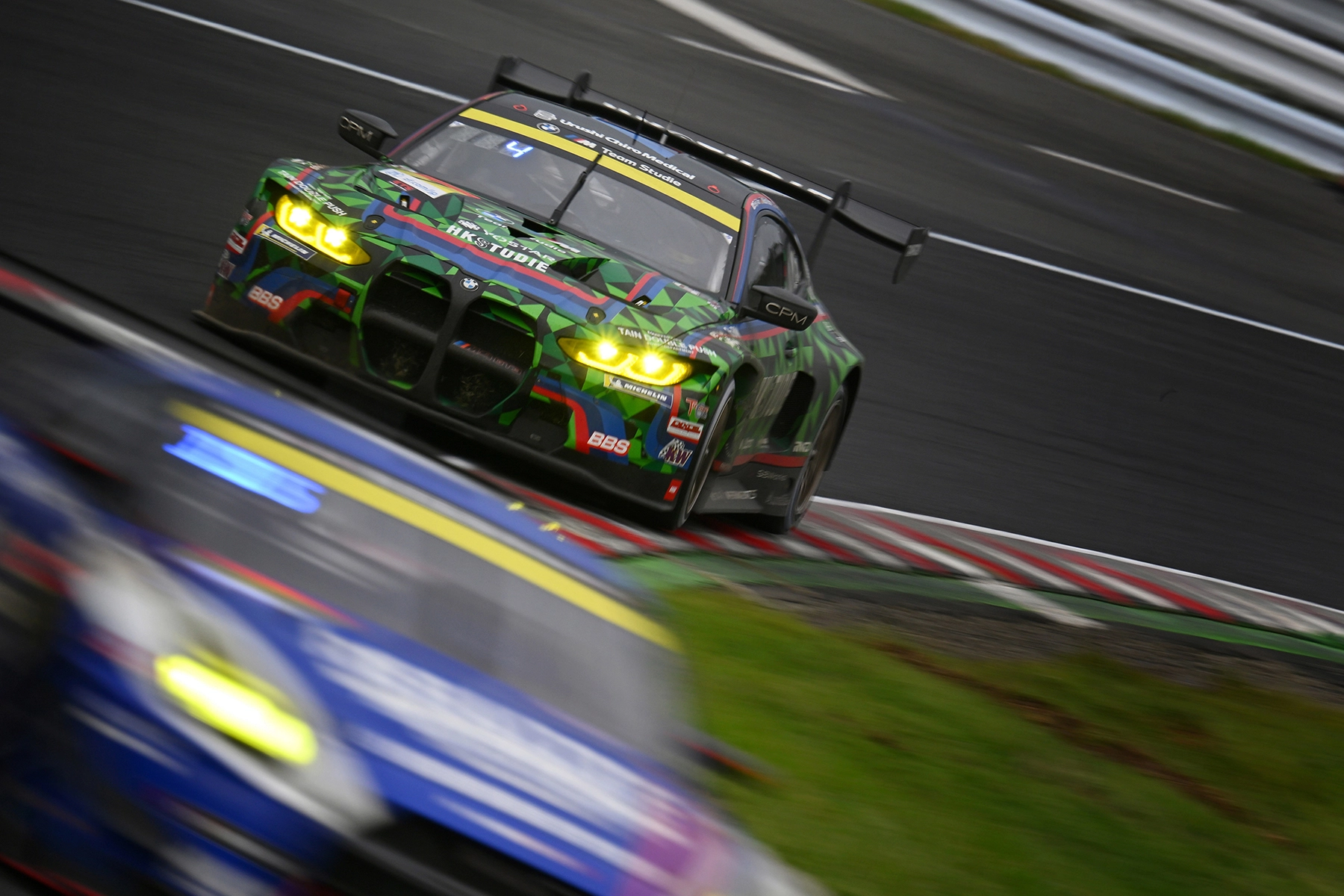
Shutter speed is important when shooting action and sports photos. If you want to capture fast movements clearly, you’ll need a high shutter speed of 1/1000th of a second or faster. For example, when you want to capture a split-second movement clearly, such as a baseball batting shot or a soccer kick, a fast shutter speed is effective for “freezing” the movement.
On the other hand, you can also take panning shots to express a sense of dynamism. In this case, set a slower shutter speed, such as 1/60 or 1/125 seconds. This will blur the background and make the subject stand out clearly, allowing you to take an impressive photo with a sense of speed. It is often used when taking photos of cars, motorcycles, and running athletes.
Use Shutter Priority Mode to Capture Fast-Moving Action

When shooting moving subjects, we recommend shooting in shutter speed priority mode. In this mode, you set the shutter speed, and the camera automatically adjusts the F-number (aperture value) to achieve the correct exposure.
For example, you can change the shutter speed to suit the shooting environment and subject, such as 1/1000 second for a baseball game or swim meet in a bright location, or 1/500 second for a basketball game in a slightly dark gymnasium and shoot at the appropriate brightness for each.
Recommended Shutter Speeds for Freezing Sports Motion
A sufficiently fast shutter speed is required to freeze the movements of players. As mentioned above, for fast movements such as a baseball swing or a soccer shot, a shutter speed of 1/1000th of a second or faster is recommended. In particular, at the moment the ball enters the frame, a high shutter speed of 1/2000th of a second may be required to freeze the ball’s movement.
For indoor sports such as basketball and volleyball, a shutter speed of around 1/500th of a second is a good guide to ensure sufficient light while still freezing the movement. Also, in places such as gymnasiums with dim lighting, increase the ISO sensitivity to ensure a sufficient shutter speed.
Track Moving Athletes with Continuous Autofocus (AF)
When photographing sports, it is common for the camera to not be able to focus properly. To track a fast-moving subject, use continuous autofocus (AF), which tracks the moving object. In this mode, the camera will constantly adjust the focus to match the subject’s movement while the shutter button is half-pressed.
It is effective to use zone or flexible spot AF areas. For example, when tracking a soccer player running around, it is easier to use zones, which covers a certain range.
Use Burst Mode to Capture the Perfect Moment
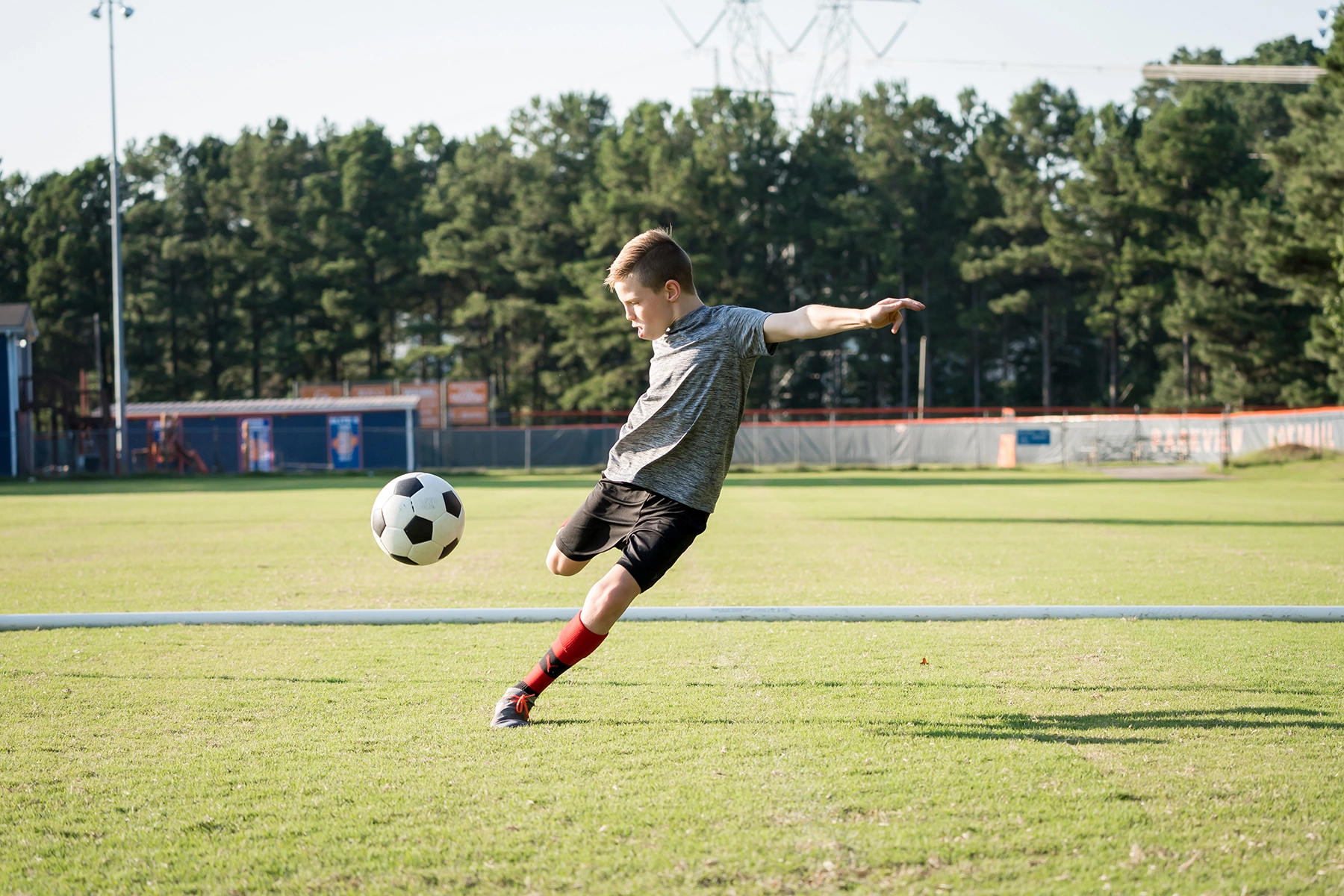
When photographing sports, make use of the continuous shooting mode, or burst mode, so that you don’t miss the decisive moment. With continuous shooting, the camera takes continuous photos while you hold down the shutter button. This makes it easier to capture split-second scenes, such as the apex of a jump or the moment of touching the ball.
Plan Your Positioning for Stronger Sports Composition
To take good sports photos, it is important to prepare in advance. If possible, check the venue in advance and find a place where you can easily see the players’ movements. For example, consider the positioning according to the scene you want to capture, such as between the infield and outfield at a baseball stadium, or behind the goal or near the touchline at a soccer stadium.
Also, be aware of the position of the sun and lighting, and know the shooting points that make use of backlighting and side light to create a variety of expressions. You can make the most of the silhouette of the players by using backlighting or emphasize the three-dimensional effect by using side light.
At field days, check the courses for each event and the movement of the players, and secure a position where you can take photos at the best angle. We especially recommend securing popular shooting spots early.
Create Motion and Energy with Panning Shots
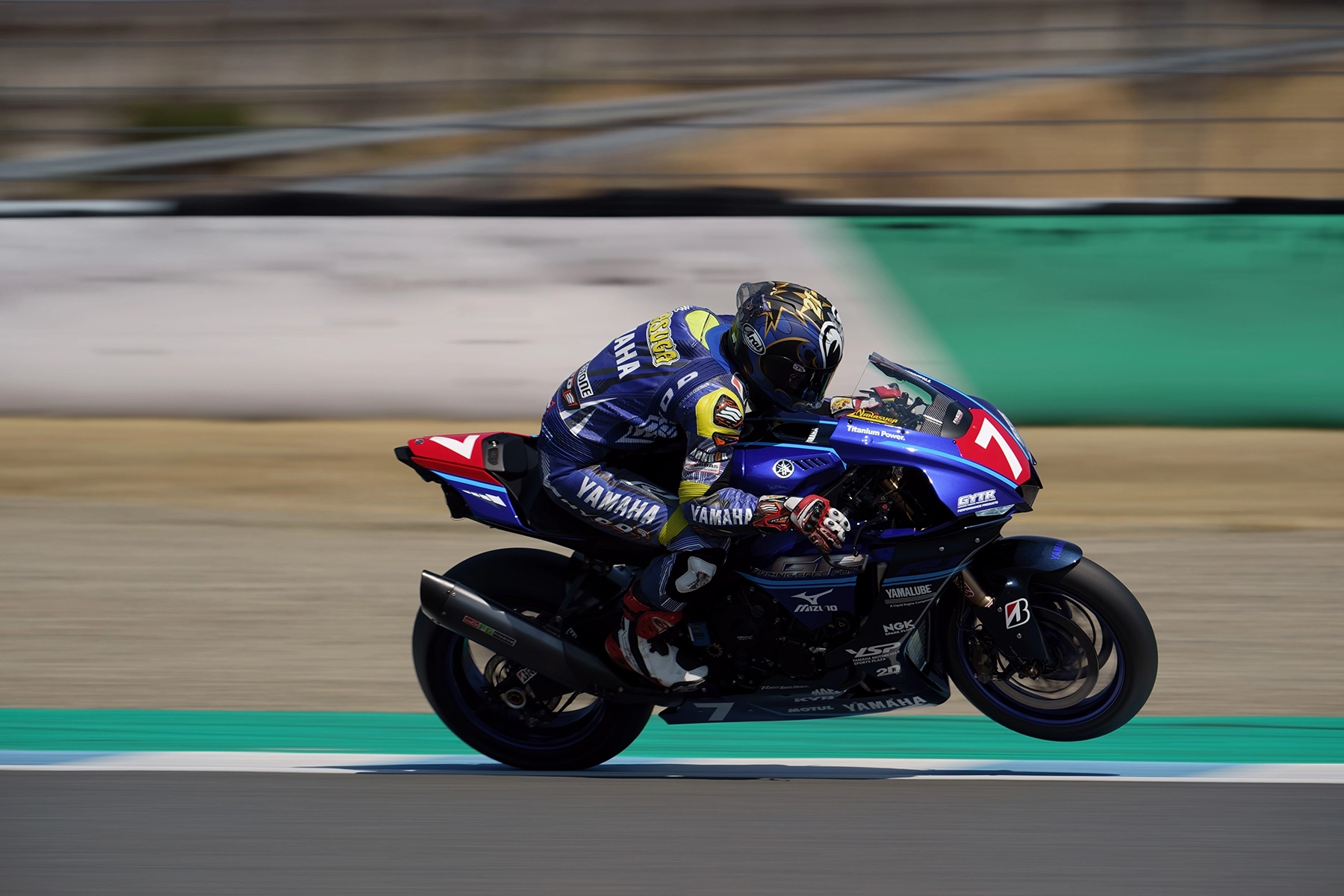
Panning is a photography technique that uses a camera to follow a subject, intentionally blurring the background to create a sense of dynamism. By keeping the main subject in focus while capturing the background in a flowing motion, you can create a photo that has a sense of speed.
Set the Shutter Speed to Approximately 1/60 Seconds
When taking panning shots, it is a good idea to aim for a shutter speed of around 1/60 seconds. The slower the shutter speed, the more blurred the background will be, creating a more dynamic feel, but the shooting will be more difficult. It is easier to improve if you start with a relatively fast setting such as 1/125 seconds and gradually slow it down.
Use a Stable Body Stance When Panning
Camera movement is also an important point for panning. Standing with your feet shoulder-width apart and your arms close to your sides, rotate the camera with your entire upper body to achieve stable panning. If you try to move the camera using only your wrist, you will not be able to achieve smooth movement.
Also, be mindful of the follow-through, starting to move before the subject is captured in the viewfinder and continuing to move after the shutter is released.
Add Visual Impact with Creative Angles and Framing
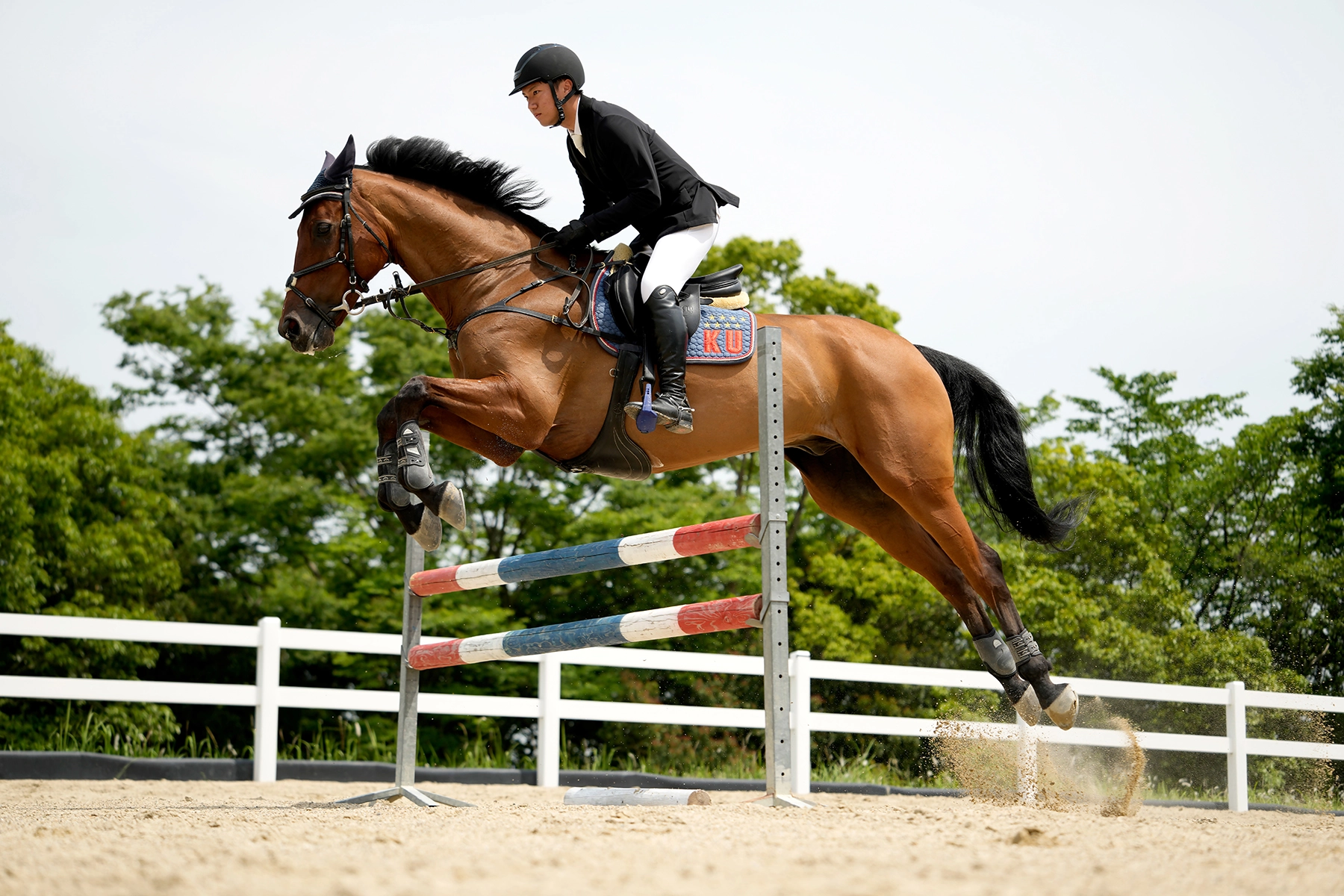
The impression of a photograph also changes depending on the position and angle from which it is taken. For example, taking a photo from a low angle, looking up slightly from a low position, will make the athletes appear larger and more powerful, adding to the impact. Taking photos from a low angle, particularly in jumping scenes or when athletes are competing with each other, will emphasize the strength and height of the athletes. When taking photos from the side, leaving some space in the direction of movement will create a sense of dynamism, as if the athlete is jumping out of the screen.
Also, by not getting too close to the subject and maintaining a moderate distance, you can capture the overall atmosphere, including the surrounding situation. Taking a photo with a wide-angle composition that includes the atmosphere of the venue will allow you to recall the scene at the time more clearly when you look back on it later.
Why a Telephoto Zoom Lens is Essential for Sports Photography
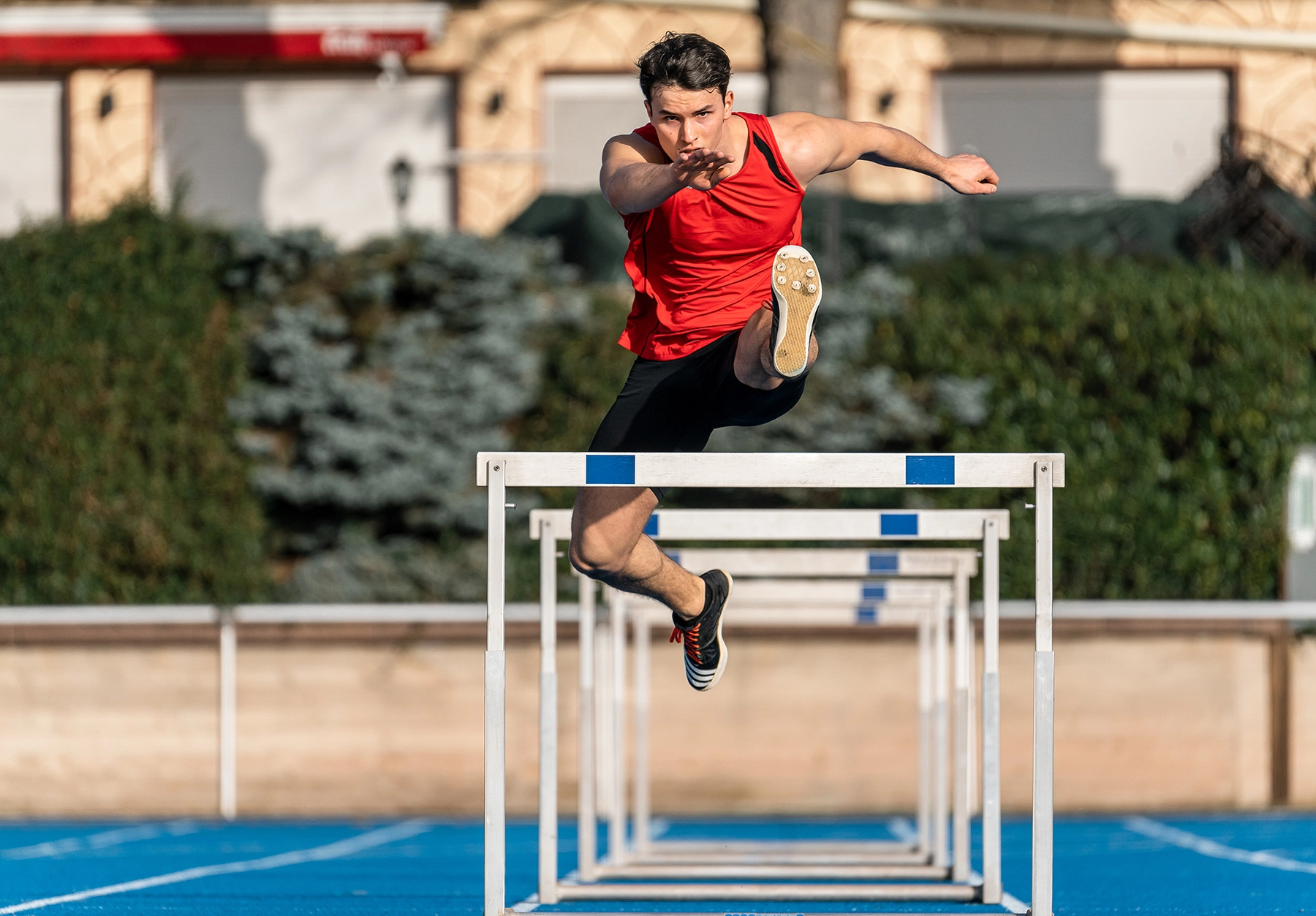
Telephoto zoom lenses with a focal length of 200mm or more are useful for sports photography. They can capture distant subjects in a large size, allowing you to clearly capture players at the edge of the field or ground, or plays at high positions. They are particularly essential when shooting in stadiums and other locations where you are at a distance from the players.
Another advantage of telephoto lenses is that they tend to produce a large amount of background blur. This makes it possible to take photos that make the players stand out from the background, highlighting their expressions and movements. Even if there is a cluttered background such as spectator stands, you can end up with an impressive photo that focuses only on the players.
Top Recommended Tamron Telephoto Zoom Lenses
All-In-One
- 35-150mm F/2-2.8 Di III VXD (Model A058): Ideal for fast-paced sports and events, this super-fast-aperture zoom lens lets you go wide for team shots or zoom in for mid-range action. Great for indoor and outdoor sports with changing distances.
- 18-300mm F/3.5-6.3 Di III-A VC VXD (Model B061): A versatile lens for sports days or casual coverage. Its wide focal range allows you to capture everything from full-field action to player portraits. Perfect for beginners or family sports events
- 28-300mm F/4-7.1 Di III VXD (Model A074): A compact, lightweight solution for casual outdoor sports shooting. Great for travel or all-day events, offering solid telephoto reach and fast autofocus performance for dynamic scenes.
Telephoto
- 70-180mm F/2.8 G2 Di III VC VXD (Model A065): With a fast f/2.8 aperture and VC image stabilization, this compact telephoto is excellent for indoor sports or field-side coverage where background separation and low-light performance are crucial.
- 70-300mm F/4.5-6.3 Di III RXD (Model A047): Lightweight and highly portable, this budget-friendly telephoto is great for daytime sports events and family activities. Ideal for outdoor soccer, baseball, and field day photography.
- 50-300mm F/4.5-6.3 Di III VC VXD (Model A069): Offers extended reach in a compact body with VC (Vibration Compensation) image stabilization for sharp shots. Excellent for tracking players across the field without heavy gear.
Ultra-Telephoto
- 50-400mm F/4.5-6.3 Di III VC VXD (Model A067): Versatile enough for both close court action with its standard focal length on the wide end and distant field shots at the tele end, this lens bridges telephoto and ultra-telephoto needs. Perfect for sports photographers needing flexibility without lens swapping.
- 150-500mm F/5-6.7 Di III VC VXD (Model A057): A powerhouse for capturing distant action like motorsports, track events, or wildlife-like shooting environments. Offers reach and stability, with VC to support handheld panning.
Prevent Camera Shake with a Tripod or Monopod
Telephoto lenses are prone to camera shake, so using a monopod will give you more stability. A monopod not only supports the camera but also makes it less tiring to shoot for long periods of time.
A tripod is very stable, but it fixes movement, so a monopod is more maneuverable when shooting a moving subject. A monopod is especially recommended when following players moving around on a large field, such as in baseball or soccer.
Anticipate the Play: Read the Game for Better Shots
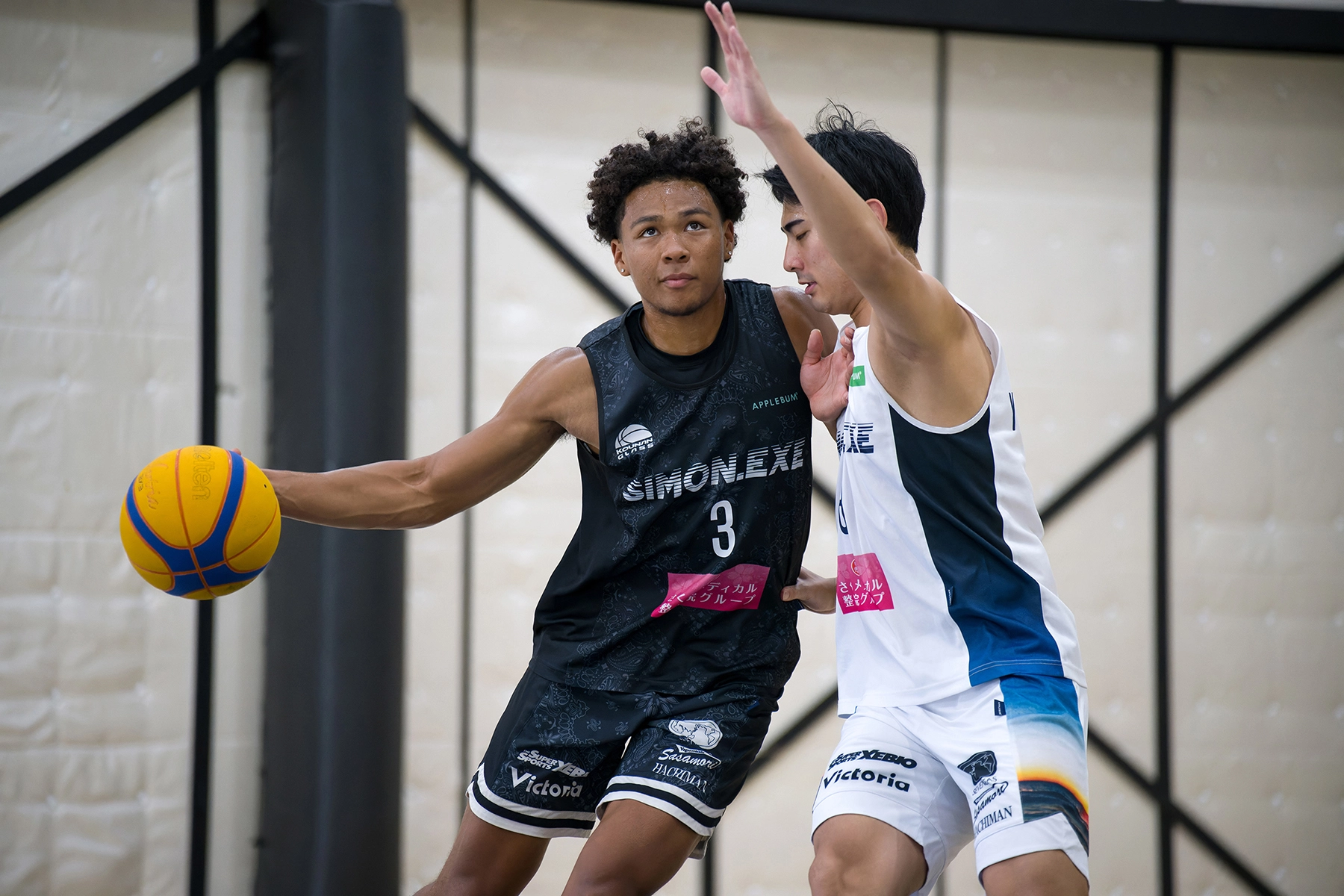
Understanding the basic flow and rules of the sport will allow you to predict the next play and prepare your camera accordingly. It is also important to read the player’s line of sight and posture to predict the next move. Pointing the camera at the line of sight of a player about to pass the ball or watching the preparations for a jump to prepare for the shutter chance, will make it easier to capture the moment you want.
If possible, watch pre-match practice sessions, past footage, and sample photos to get an idea of what kind of moments will make an attractive photograph. Referencing the work of professional photographers will also give you a clear image of the moment you want to capture.
Tips for Shooting Different Sports
The key points to remember when taking photos vary depending on the type of sport. Understand the characteristics of each and learn effective shooting techniques.
Elementary School Field Day
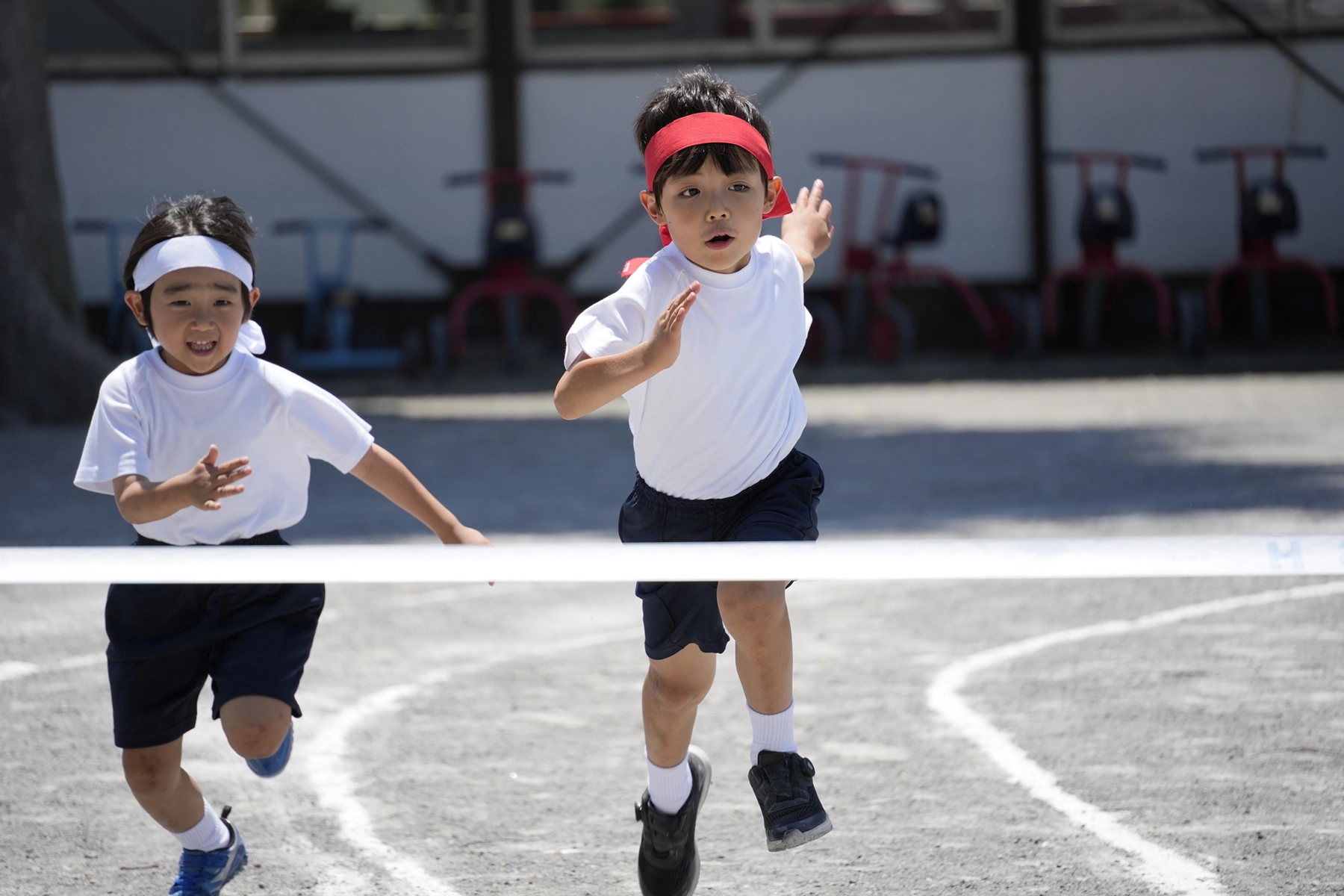
In a footrace at field day, capturing a child’s expression as they finish near the finish line will convey their hard work. We also recommend using panning shots to create a sense of dynamism. For panning shots from the side, try moving the camera at the same speed as the child, with a shutter speed of about 1/60th of a second.
For distinctive events such as obstacle races and ball toss, try changing the angle and position to create a sense of dynamism. For example, taking a photo of a child practicing before the competition will help convey the height and power of the jump. Also, taking photos of the child practicing before the competition will serve as a backup in case they fail during the real thing.
Baseball
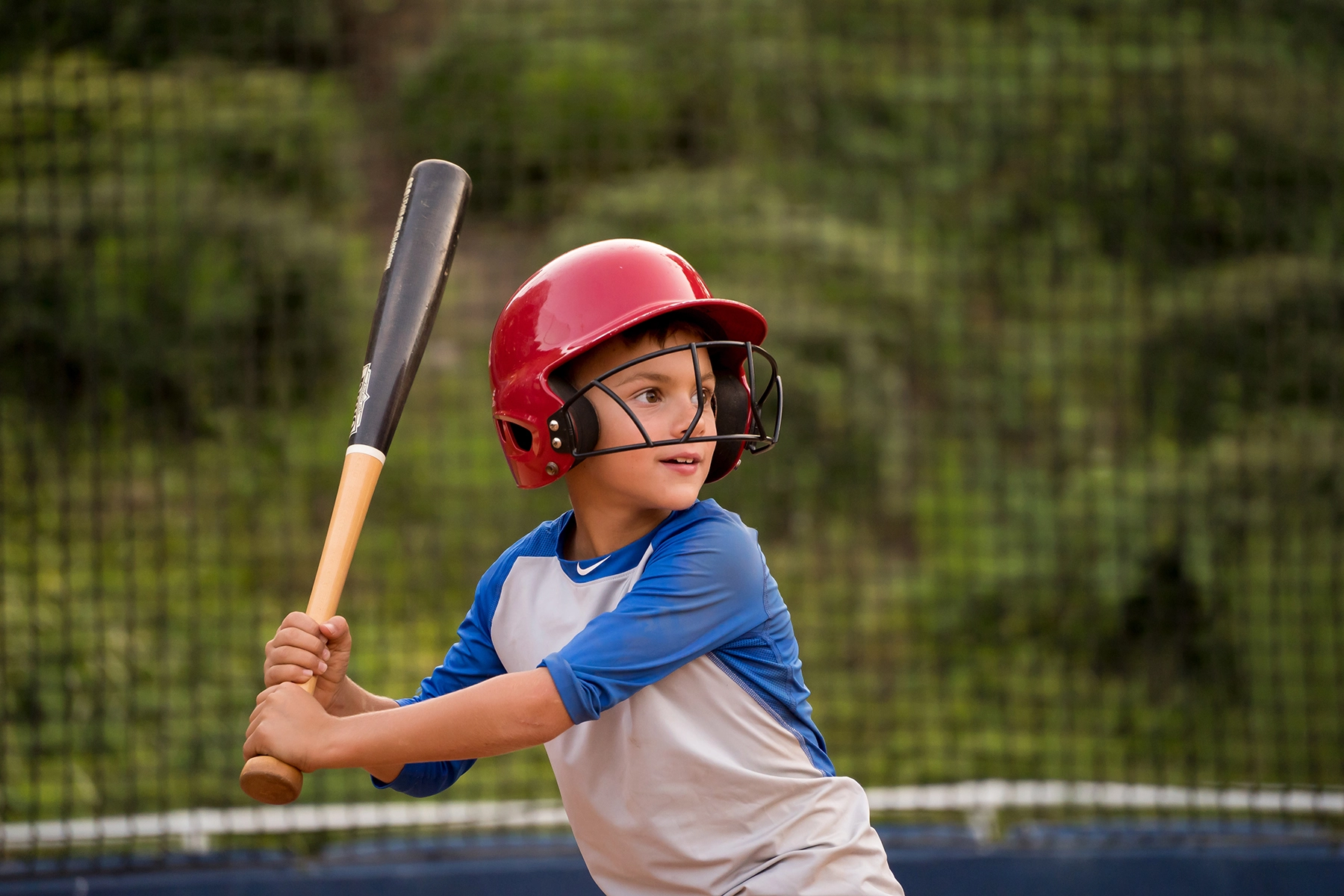
The basic settings for a batter’s swing and a pitcher’s pitching form are around 1/500 to 1/1000 seconds or faster. In particular, a high shutter speed of around 1/2000 seconds will allow you to clearly capture the moment of impact when the bat catches the ball. In defense, aiming for the moment when you can see the player’s facial expression and the position of the ball will create a photo with a sense of tension.
When shooting behind the backstop or other areas, you can blur and remove the net by getting close to it with an aperture close to maximum aperture.
Soccer
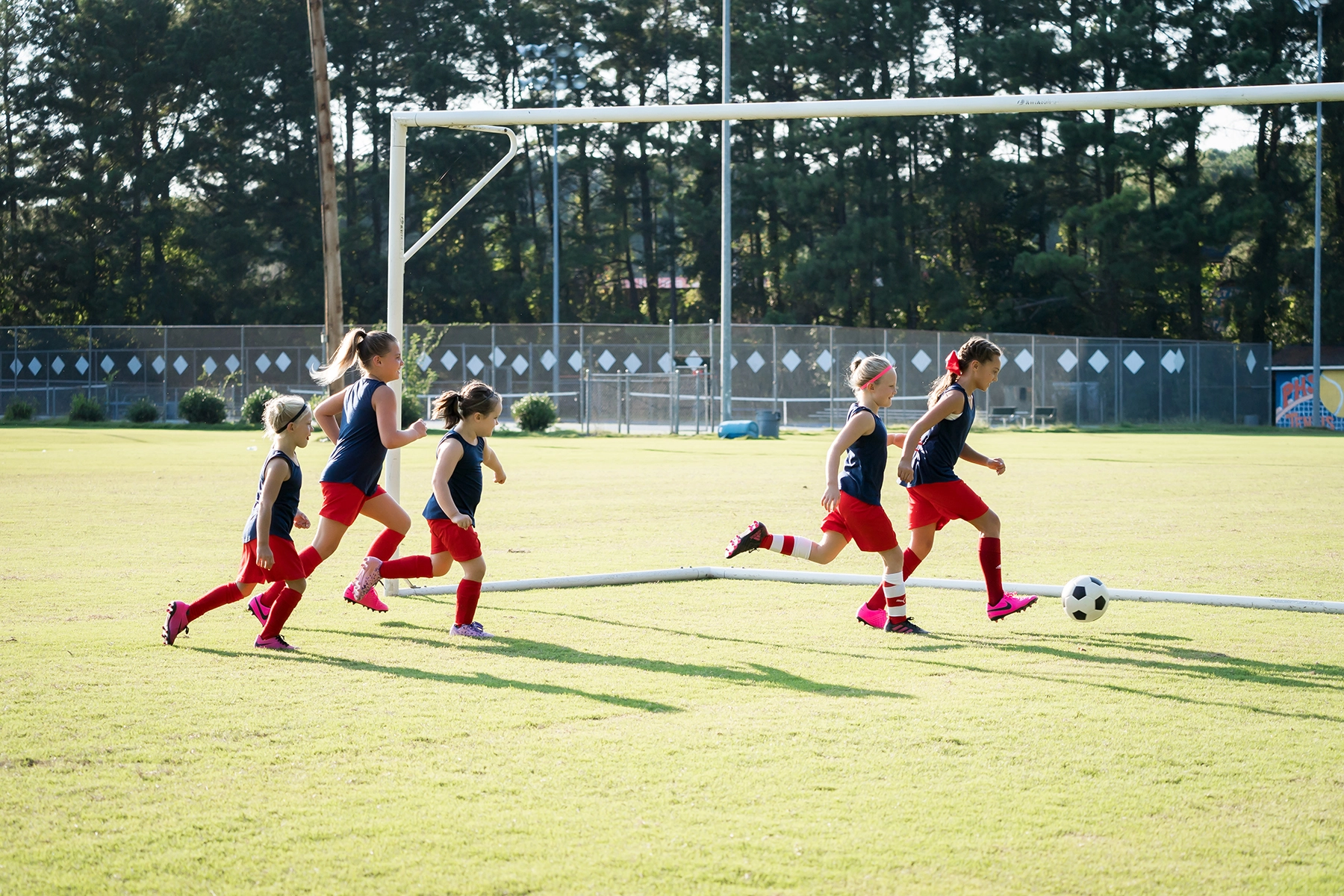
Capturing the tactics and expressions of the players in attack and defense in front of the goal or during a shooting scene will create a photo with a sense of realism. It is important to predict and wait for the decisive moment, such as the goalkeeper’s save or the striker’s shot. Use a fast shutter speed to freeze the movement.
Also, by including the ball in the frame along with the player’s profile, you can create a composition that makes it easier to convey the intention of the play. For example, capturing the ball and the player’s gaze as they stare at it at the same time will create a photo that conveys the tension of the play.
Basketball
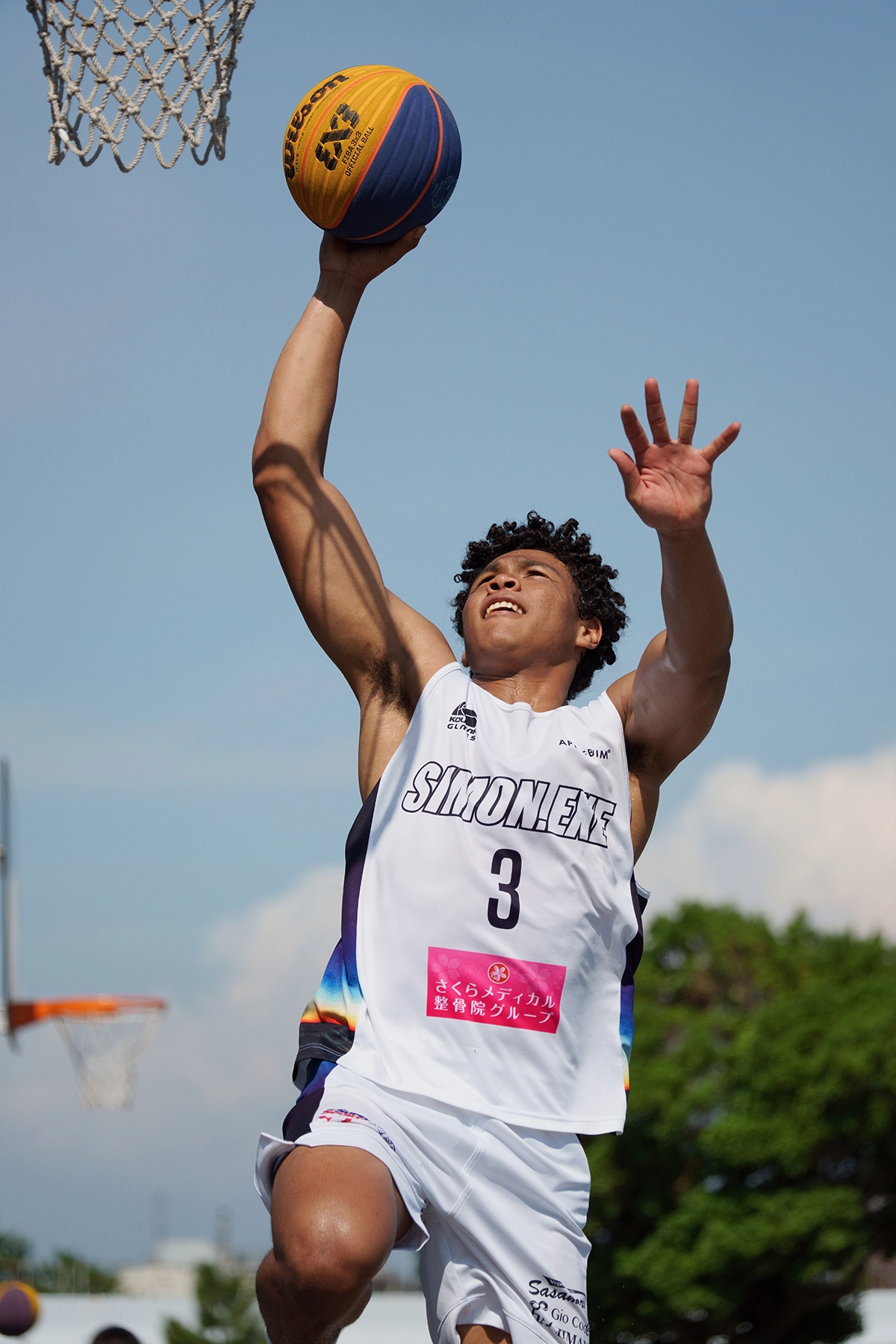
The moment of the shot can be made more impressive with a vertical composition that conveys the upward extension and height of the jump. Shooting from an angle looking slightly up from under the basket will highlight the beauty of the player’s jumping power and extension. Flashy plays such as dunks make particularly impressive photos.
Since it is an indoor sport, the amount of light is likely to be low, so it is a good idea to aim for a shutter speed of about 1/500 seconds or faster. In dribbling scenes, you can also create a sense of dynamism with panning shots. Move the camera to follow the player’s movements with a shutter speed of about 1/60 seconds. Panning shots in indoor sports are not easy, but we encourage you to give it a try.
Motorsports
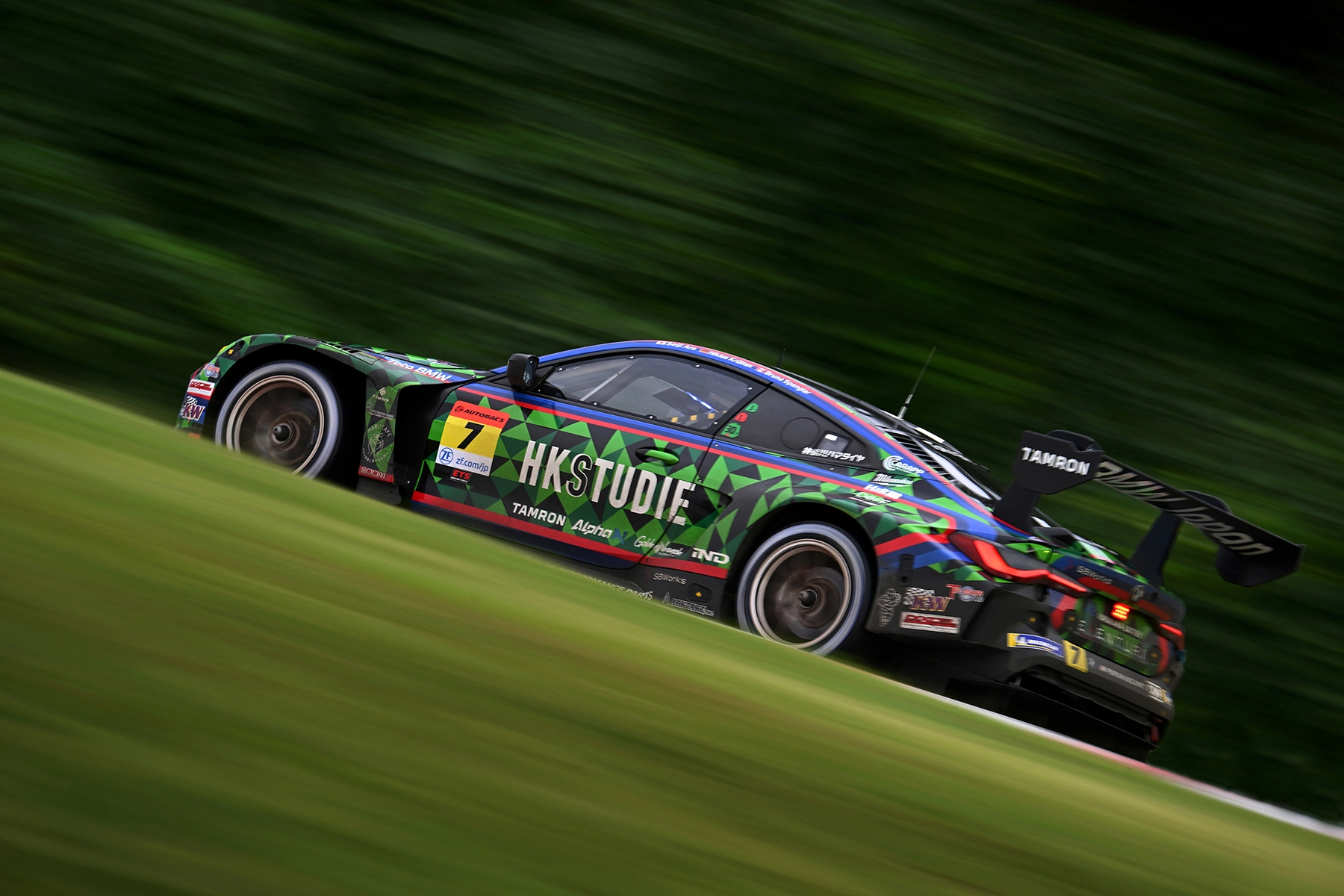
Try taking panning shots of cars and motorbikes during a race. It’s easier to succeed at panning shots when shooting from a point where the speed is constant, such as around a corner. You’ll also increase your chances of success by practicing at the same spot multiple times.
The facial expression of the driver or rider is also an important element, so don’t miss the chance to see their expression inside the helmet. Capturing not only the machine but also the human drama, such as moments during pit work or on the podium, will give your work more depth.
How to Choose the Right Tamron Lens for Sports Photography
Here we will introduce how to choose the best lens for sports photography.
Focal Length
Understanding how the focal length of your lens will affect your image is crucial for great sports photography results. If you are shooting at a distance, such as at a stadium, you will need a telephoto lens of 200mm or more, or an ultra-telephoto lens. For example, at a professional sports match, a lens of 300mm or more will allow you to capture the facial expressions of the players. If you are shooting at a relatively close distance, such as at a sports day, a telephoto zoom lens of around 70mm to 200mm will be versatile and easy to use. Many types are reasonably sized and easy to carry, so they are also recommended as a first telephoto lens.
Maximum Aperture
Lenses with an aperture value of F2.8 or higher are suitable for sports photography, as they make it easier to achieve a fast shutter speed even in indoor sports. In particular, in indoor sports such as gymnasiums and pools, where the lighting is often dim, a fast lens is ideal.
Weight and Compactness
Lightweight and compact lenses are useful for long-term shooting. Lightweight lenses are particularly easy to use for events where you will be shooting all day, such as sports days.
AF Performance
Use a lens that has high motion tracking capabilities and can focus smoothly and accurately. It is also a good idea to check how quiet the AF motor is. This will allow you to be as considerate as possible to your surroundings even in the quiet environment of a match. Tamron’s VXD autofocus mechanism is accurate, fast and quiet.
Built-in Image Stabilization
Lenses with built-in image stabilization like Tamron VC (Vibration Compensation) mechanism allows for stable shooting even when handheld. In addition, lenses that allow you to adjust the amount of image stabilization available will enable you to create a variety of different expressions, even when taking panning shots.
Final Thoughts: Capture Motion with Purpose and Technique
When taking sports photos, the shooting method will change depending on how you want to express the movement of the subject. If you want to freeze the movement, shoot with a fast shutter speed. Another way to create a sense of dynamism is to use panning shots. Always keep in mind what will happen next so that you don’t miss your chance to take the photo.
Learn more about Tamron lenses for sports action photography at an authorized Tamron dealer near you or visit the TAMRON Store.
